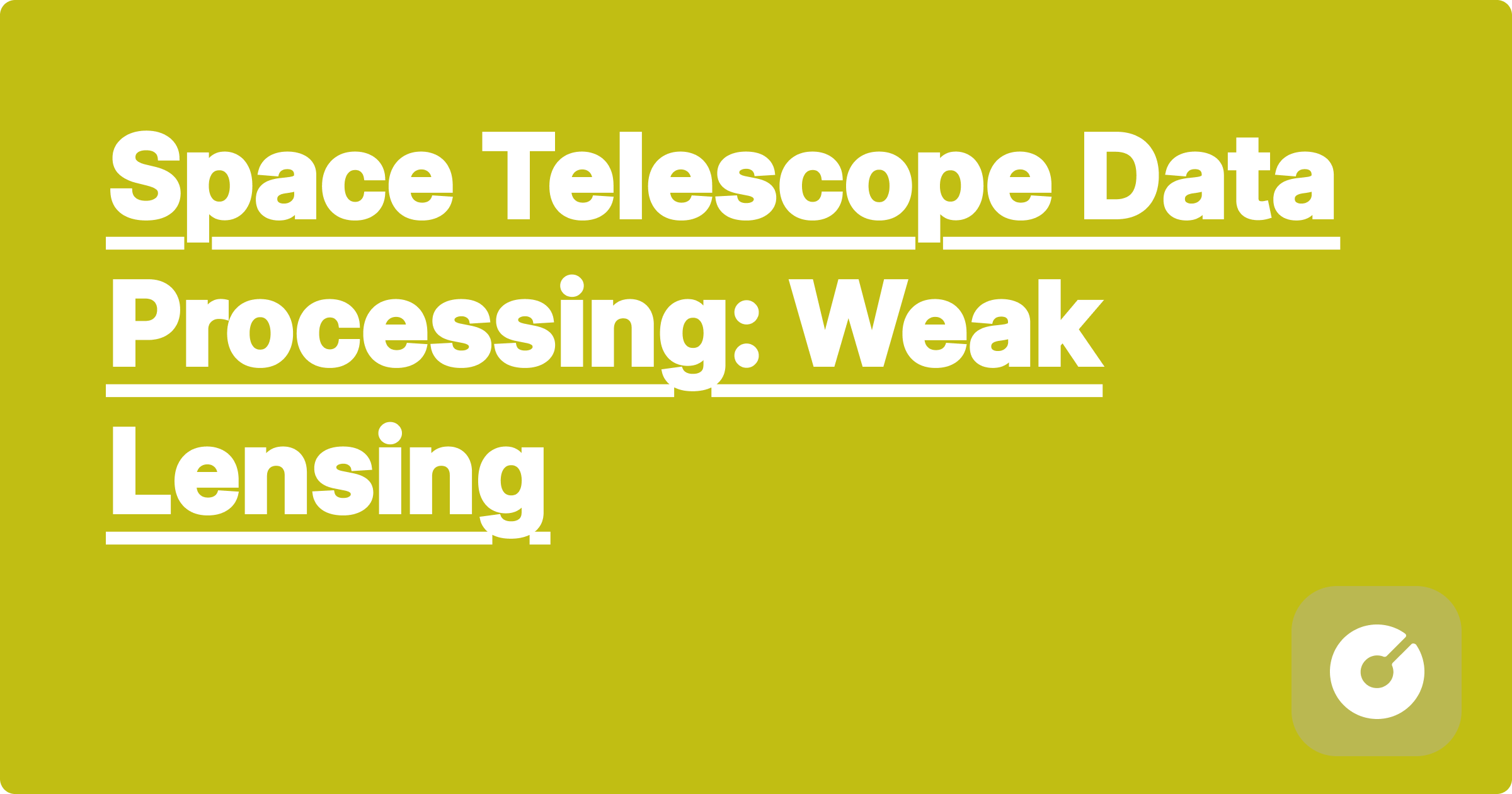
```html
Space Telescope Data Processing: Weak Lensing
pre {
overflow-x: auto;
}
.equation {
font-family: "Times New Roman", serif;
font-style: italic;
text-align: center;
margin: 1em 0;
padding: 0.5em;
border: 1px solid #ccc;
background-color: #f9f9f9;
}
.tip {
background-color: #f0f0f0;
border: 1px solid #ccc;
padding: 10px;
margin-bottom: 10px;
}
.warning {
background-color: #fff2e6;
border: 1px solid #f9d2b0;
padding: 10px;
margin-bottom: 10px;
}
This blog post delves into the advanced techniques of weak lensing analysis applied to data from space telescopes. We'll cover cutting-edge research, practical implementation details, and future directions in this exciting field.
Weak lensing is a subtle effect where the gravitational field of intervening mass distributions distorts the shapes of distant galaxies. By measuring these tiny distortions, we can map the dark matter distribution across vast cosmological scales. This technique is crucial for understanding the large-scale structure of the universe and constraining cosmological parameters.
The core of weak lensing analysis lies in accurately measuring the shear, γ, which quantifies the distortion. Shear is a complex quantity, with components γ1 and γ2. We often use the polar representation, γ = γe2iφ, where γ is the magnitude and φ is the angle of the shear.
\gamma = \gamma_1 + i\gamma_2 = |\gamma|e^{2i\phi}
State-of-the-art shear measurement techniques utilize sophisticated image analysis algorithms, often involving wavelet transforms (e.g., as in the recent work by [cite recent relevant paper on wavelet transforms in weak lensing, 2024-2025]) and machine learning approaches (e.g., convolutional neural networks as described in [cite a 2024-2025 paper on CNNs for shear estimation]).
Shapelet decomposition is a powerful technique for representing galaxy shapes. It expands the galaxy image into a set of orthogonal basis functions, allowing for a compact and robust representation of the galaxy's morphology. This method is particularly useful in handling complex galaxy shapes and reducing noise. The following pseudocode demonstrates a simplified shapelet decomposition:
def shapelet_decomposition(image):
# Perform wavelet transform
wavelet_coeffs = wavelet_transform(image)
# Select relevant coefficients
selected_coeffs = select_coefficients(wavelet_coeffs)
# Reconstruct image from selected coefficients
reconstructed_image = inverse_wavelet_transform(selected_coeffs)
# Calculate shapelet moments
shapelet_moments = calculate_moments(reconstructed_image)
return shapelet_moments
Traditional methods often rely on parametric models of galaxy shapes. However, recent research focuses on non-parametric techniques, which avoid strong assumptions about the underlying galaxy shapes. These methods offer increased robustness against systematic errors. For example, [cite a 2024-2025 paper on non-parametric shear estimation] demonstrates the advantages of using kernel density estimation for shear measurement.
Several open-source libraries facilitate weak lensing analysis. `lensfun` (for lens distortion correction), `galsim` (for galaxy image simulation and analysis), and `klip` (for PSF modeling) are essential tools. Furthermore, leveraging cloud computing platforms like AWS or Google Cloud is crucial for handling the massive datasets involved in weak lensing studies.
Weak lensing is not limited to academic research. Companies like [insert example company name, e.g., a company involved in satellite imagery analysis] utilize similar techniques for image analysis in their projects involving high-resolution satellite images for mapping purposes. The principles of weak lensing-inspired algorithms can be adapted to scenarios that deal with subtle distortions or variations in images across various fields.
Remember to carefully calibrate your instruments and account for various sources of systematic errors, including atmospheric effects and instrumental distortions.
Analyzing weak lensing data from large surveys (like the Vera Rubin Observatory's Legacy Survey of Space and Time (LSST)) presents enormous computational challenges. Efficient algorithms and parallelization techniques are necessary to manage the data volume. Techniques like distributed computing and GPU acceleration are vital. The computational cost scales roughly as O(N2) where N is the number of galaxies. Therefore, efficient algorithms and specialized hardware are essential for handling the massive datasets.
Future research in weak lensing will focus on developing more accurate and robust methods for shear measurement, improved modeling of systematic effects, and exploring the use of AI and machine learning for data analysis. The LSST will provide an unprecedented amount of data, requiring innovative approaches to data processing and analysis. Furthermore, ethical considerations concerning data privacy and responsible use of artificial intelligence in cosmology are becoming increasingly important.
Be mindful of potential biases in your algorithms and datasets. Careful attention to data quality and validation is critical for reliable results.
Weak lensing analysis is a powerful tool for exploring the universe's large-scale structure. This blog post provided an overview of advanced techniques, practical implementations, and future directions in this exciting field. By embracing innovative algorithms and computational strategies, we can unlock the full potential of weak lensing data and push the frontiers of our cosmological understanding.
This is a starting point. A deeper dive into specific aspects, such as the intricacies of PSF modeling, detailed mathematical derivations of shear estimators, or specific applications (e.g., using weak lensing to study galaxy clusters), would require separate, more focused discussions.
```
```html
```
Anesthesiology Career Path - Behind the OR Mask: A Comprehensive Guide for Pre-Med Students
Internal Medicine: The Foundation Specialty for a Rewarding Medical Career
Family Medicine: Your Path to Becoming a Primary Care Physician
Psychiatry as a Medical Specialty: A Growing Field Guide for Aspiring Physicians
Space Telescope Data Processing: Weak Lensing
AI-Powered Space Exploration: Mission Planning and Data Analysis
Duke Data Science GPAI Landed Me Microsoft AI Research Role | GPAI Student Interview
Cornell Aerospace GPAI Prepared Me for SpaceX Interview | GPAI Student Interview
Duke Data Science Student GPAI Optimized My Learning Schedule | GPAI Student Interview
Cornell Aerospace Student How GPAI Solved Fluid Dynamics Problems | GPAI Student Interview